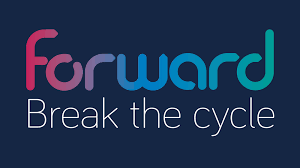It’s disheartening, though sadly not surprising, to see that the significant findings from the Rehabilitation for Addicted Prisoners Trust (RAPt) programme (now Forward Trust) have long been overlooked, especially given the proven success of 12-step abstinence-based programmes within the prison system. The RAPt programme, which has been in operation for over 30 years, stands as the largest and most comprehensive prison-based drug treatment initiative in the UK. Its effectiveness in reducing reoffending is evident, particularly among those who fully commit to the programme, but its value has not always been given the recognition it deserves.
Research led by Albert M. Kopak and his colleagues examined recidivism rates among male prisoners, comparing those who completed RAPt with those who either didn’t finish or participated in less intensive treatments. The results were clear: prisoners who completed the RAPt programme were significantly less likely to reoffend within 12 months of release. Specifically, only 31% of RAPt completers reoffended, compared to nearly half of the participants in alternative programmes. This is a powerful testament to the programme’s success in breaking the cycle of addiction and crime.
One of the key components of the RAPt programme’s success is its 12-step abstinence-based model, which has been shown time and again to be effective in both community and prison settings. This approach not only addresses the physical dependency on substances but also dives deep into the behaviours and thought patterns that perpetuate addiction. Importantly, the programme requires full commitment from participants, with staff and volunteers—many of whom have lived experience of addiction—working closely to foster a culture of accountability and growth.
The research highlighted some troubling trends as well, particularly among those who were treated for heroin or cocaine dependency. Prisoners who were dependent on these substances were far more likely to reoffend than those with other drug dependencies, indicating that further enhancements to the RAPt programme may be needed to better support individuals with more entrenched addictions. Additionally, prisoners sentenced for property crimes, often linked to supporting a drug habit, were shown to be at particularly high risk for reoffending.
What’s especially frustrating is how long it has taken for these valuable findings to be acknowledged, despite the mounting evidence of the programme’s success. RAPt, with its abstinence-based model, has been quietly delivering positive outcomes for decades. Yet, as with many evidence-based addiction treatments, it seems to have been overlooked by policymakers and prison systems, who often prioritise less intensive and less effective harm-reduction models.
As we push for a more evidence-driven approach to addiction recovery, particularly within the criminal justice system, it’s crucial that programmes like RAPt are given the attention and resources they need to expand. The findings are clear: intensive, abstinence-based treatment works, and it works even in the most challenging of environments—our prisons.
In a time when prison overcrowding and reoffending are major societal concerns, why are we not amplifying the voices of those advocating for the kinds of solutions that have been proven to reduce crime and transform lives? The RAPt programme’s successes should serve as a wake-up call for a wider adoption of these models, particularly in systems where addiction and criminal behaviour are so deeply intertwined.
It’s high time the powers that be acknowledge and act on what the research has been showing for years: effective addiction recovery programmes not only rehabilitate individuals but also create safer communities. Let’s stop ignoring the evidence.
You can read the research here

